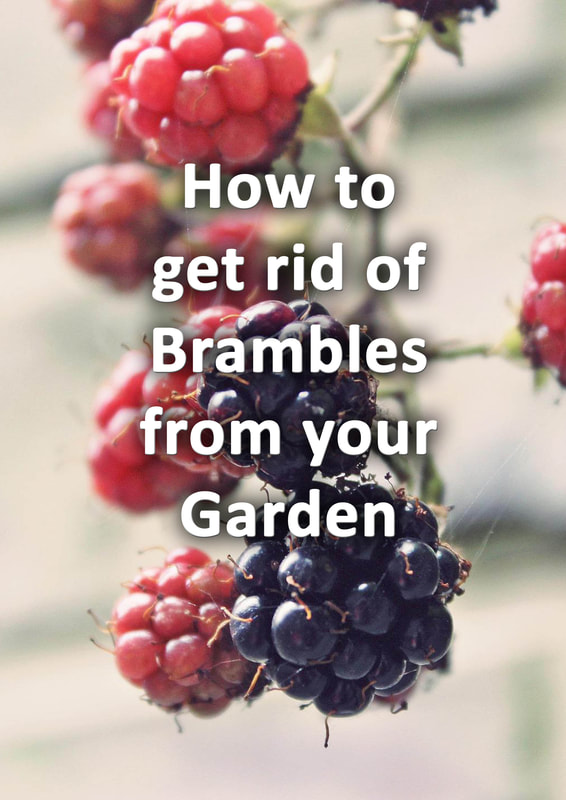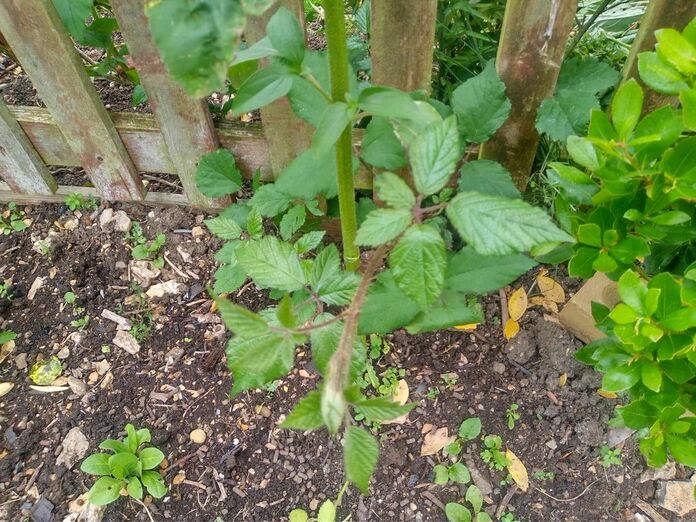|
this article contains affiliate links
The common bramble is a wild, pioneering, woody plant, which has colonised much of the northern hemisphere.
In open ground, the perennial plant forms dense thickets which are impenetrable without cutting machinery or tools. Brambles are well known for their sharp, curved, thorns which easily pierce clothing and skin. This characteristic makes them extremely unpopular amongst gardeners. How do Brambles spread?
Once established, brambles can become a persistent annoyance to every gardener. Their long, arching stems, grow fast and quickly form roots when they make contact with the soil. This gives them the ability to spread very quickly especially in less well maintained gardens. Brambles are actually the plants which produce blackberries which are loved by people and wildlife. Rich in Vitamin C and antioxidants bird’s and small mammals devour the fruits on mass. Unfortunately for us, the small seeds within the fruit are not digested by wildlife.
This results in seeds being deposited in the most awkward of places. Behind sheds, along fences and inside hedges are just some of the places brambles germinate.
Established, source, plants, can continue to spread out from the crown no matter how many times they are cut. Fundamentally the only real way to get rid of brambles from your garden is to dig them out by the roots! Why do brambles grow so fast?
Brambles have evolved to rapidly spread to take advantage of open ground and available sunlight. This is why they can often be seen growing on the edge of woodland and scrubland. In nature if an old tree died or there was a land slide, pioneers like brambles could grow fast to take advantage of new, available, sunlight. Being a woody perennial, Brambles have robust roots which can draw up water and nutrients quickly for rapid growth. Their tolerance of nutrient poor soil and cold climates mean they can easily outcompete other plant species quickly. How to get rid of brambles naturally?
The best way to get rid of brambles naturally is dig them out by the roots completely. This way, they will not keep sprouting and setting seed in your garden. A continuous vigilance every spring will allow you to locate and destroy small seedlings as they germinate. This approach is vital as birds will continuously spread bramble seeds in their droppings. Once you have weeded and removed brambles by the roots it is best to mulch your soil with thick mulch. Mulching with woodchip will make it less likely brambles will root and spread across borders.
When digging out brambles make sure you remove the thick, woody, base or choke just under the soil. Try to dig out any roots or surface runners of the plant completely.
If your brambles have formed a dense thicket you will need to cut down the vegetation first. For this you will need safety boots, eye protection, thick clothing, and elbow length gardening gloves. The best tools for removing bramble thickets are either hedge trimmers or brush cutters. These can be used in a weeping motion to chop the arching stems into tiny pieces.
When you have cut the thicket into small pieces you can rake off the vegetation and compost it. Then you will have to go around and dig out the root crowns by hand.
Once you have cleared the area you will have to monitor the ground in the coming weeks for any new shoots. At this point it is a good idea to dig over the soil and remove any visible roots. Then you are ready to use the ground for whatever you wish. What is the best weed killer for brambles?
Because brambles are robust and woody perennials even weed killer can have a tough time killing them. The best, recommended, weed killer for brambles is Glyphosate but bear in mind it will also kill other plants. I would strongly recommend not using chemicals and digging out the bramble roots by hand. Does salt kill brambles?
Salt can be used to kill weeds as many plants cannot tolerate high levels of sodium. However, although young brambles could be killed by a good amount of salt it is doubtful an established bramble would. Brambles have tough woody roots which are very tolerant of extreme conditions. By using salt you are more likely to affect less robust garden plants you want to thrive. How to get rid of brambles from fences
Brambles are notorious for taking root along fence lines. This is normally because birds perch along fences and poop out bramble seeds during late summer. Once established, they can be very challenging to remove as their roots straddle two properties. The best course of action is to nip it in the bud before the bramble becomes established. Remove the panels temporarily and dig out the brambles and roots thoroughly. How to get rid of brambles from hedges
In a similar way with fences brambles have an annoying way of establishing within hedges. This is usually because birds and small mammals use them for shelter and green corridors. Animals poop out bramble seeds along hedges where they can geminate unnoticed. Once brambles germinate they are free to spread throughout the hedge making them difficult to access and dig out.
The best way to get rid of brambles from a hedge is to cut them under the soil with a grafting spade.
This long, tool, can be thrust deeply under the roots using leverage to force them out of the ground. You will have to peer along the base of the hedge to locate their long, straight and thorny stems. How to prevent brambles establishing
As Bramble seeds have the ability to be continuously sown by birds preventing brambles will require ongoing management. There is however a number of things you can do to prevent brambles from establishing. The first thing is to exercise a regular garden maintenance schedule. The more you maintain your lawns and flower borders the more chance you have of weeding young plants early.
Keeping your garden clean and tidy will deter small mammals and birds from using your backyard. This will lead to less bramble seeds being distributed within droppings.
Keep all fences in a good state of repair and replace any degraded panels. This will prevent young brambles from establishing along your boundaries. Keep bare soil to a minimum, if you have flower borders make sure they are full of plants you like! This will reduce light and room for brambles and other weeds to establish.
Improve your garden soils fertility and overall quality. This will create a looser texture which will make pulling out stubborn weeds like brambles easier!
For more information on improving your garden soil read our article here. Mulch your beds with a thick layer of mulch; this could be bark mulch or wood chippings. This will reduce the risk of brambles germinating and spreading via runners over the soil.
Thank you for reading our article on how to get rid of brambles from your garden permanently. Have you got any tips on how to get rid of brambles from your garden?
We would love to hear your suggestions in the comments below!
'As an Amazon associate I earn from qualifying purchases'
0 Comments
Leave a Reply. |
The Author
|
Landscaping services across Buckinghamshire, Amersham, Aylesbury & High Wycombe
Hyde Heath, Amersham, Buckinghamshire |
|


















